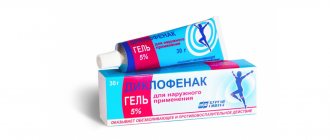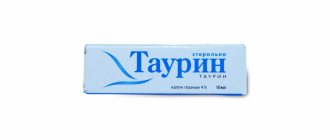"Calcemin Advance" is a relatively inexpensive drug for replenishing the deficiency of calcium, magnesium, manganese, boron and copper. Improves mood, sleep, helps restore bone and dental tissue, normalizes phosphorus metabolism. Intended for use by adults and children over 12 years of age. There are not many contraindications for the product, but it should not be taken by young children, as well as pregnant and lactating women.
Description, composition of the drug
The drug is available in the form of tablets that contain several active ingredients (quantities per 1 piece are indicated):
- calcium in the form of citrate and carbonate 500 mg;
- vitamin D3 200 IU;
- magnesium in pure form 40 mg;
- zinc in pure form 7.5 mg;
- copper in oxide form 1 mg;
- pure manganese 1.8 mg;
- pure boron 250 mcg.
The following additional components are used: stearic acid, maltodextrin, cellulose and others.
The drug is intended to strengthen bone and dental tissue. It promotes better absorption of calcium and normalization of phosphorus metabolism. The product is also used to replenish the deficiency of calcium, vitamin D3, boron, magnesium and other compounds. Due to the large number of active components, there is no information on pharmacokinetics and pharmacodynamics.
The product is produced in the form of tablets, which are packaged in 30, 60 or 120 pieces. Store the drug at room temperature in the range of 15-30 degrees, in the absence of direct sunlight. Access for children is prohibited.
Instructions for use CALCEMIN® ADVANCE
Phenytoin, barbiturates, carbamazepine, rifampicin:
may reduce the effect of vitamin D3 by increasing its metabolism to inactive metabolites.
Bisphosphonates, fluorides:
it is possible to reduce the absorption of bisphosphonates and sodium fluoride in the gastrointestinal tract. It is recommended to take at least 1-2 hours before or after taking Calcemin® Advance. It is preferable to use bisphosphonates and calcium supplements at different times of the day.
Tetracycline:
the absorption of tetracycline in the gastrointestinal tract may be reduced. It is recommended to take at least 2-3 hours before or 4-6 hours after taking Calcemin® Advance.
Cardiac glycosides, calcium channel blockers:
possible increase in the toxicity of cardiac glycosides (danger of lethal arrhythmia). Monitoring of ECG and blood calcium concentration is recommended. The effectiveness of calcium channel blockers, such as verapamil, in atrial fibrillation is reduced. Combined use is not recommended.
Levothyroxine:
Possible impairment of absorption of levothyroxine. It is recommended to take at least 2-4 hours before or 4-6 hours after taking this drug.
Quinolones, antivirals:
the absorption of antibacterial agents from the quinolone group (for example, ciprofloxacin, levofloxacin, norfloxacin, ofloxacin, nalidixic acid) and antiviral agents (protease inhibitors) may be impaired. It is recommended to take at least 2-4 hours before or 4-6 hours after taking this drug.
Thiazide diuretics:
Thiazide diuretics reduce urinary calcium excretion. Due to the increased risk of hypercalcemia with concomitant use of thiazide diuretics and calcium supplements, it is recommended to regularly monitor serum calcium levels during long-term treatment.
Glucocorticoids, hormonal contraceptives:
reduce calcium absorption, possibly reducing the effect of vitamin D3. A dose adjustment of Calcemin® Advance may be required.
Ion exchange resins such as cholestyramine, laxatives, orlistat:
simultaneous use with this drug may reduce the absorption of vitamin D3 in the gastrointestinal tract. It is recommended to take 2 hours before or 4-6 hours after taking vitamin D.
Iron, zinc, magnesium, strontium ranelate:
calcium may reduce the absorption of iron, magnesium, zinc and strontium ranelate. If joint use is necessary, it is recommended to maintain an interval of at least 2 hours before or 4-6 hours after taking calcium supplements.
Food:
Possible interaction with certain foods (eg, those containing oxalic acid, phosphates, phytic acids, or foods high in fiber). Due to the risk of decreased calcium absorption, it is recommended to maintain an interval of at least 2 hours between taking calcium supplements and these foods.
Contraindications and side effects
In some cases, taking the drug is excluded:
- excess calcium;
- hypercalciuria;
- children up to 11 years of age inclusive;
- hypersensitivity to individual components;
- urolithiasis.
Side effects are not observed so often, but in some cases they may occur in different organ systems:
- immune system - allergic reactions;
- digestive system: feeling of nausea, vomiting, heaviness in the abdomen;
- metabolic system: excess calcium, symptoms of hypercalciuria (including nausea and vomiting, muscle pain, abdominal pain, problems with appetite, increased thirst due to dehydration, frequent urge to urinate, decreased performance, increased fatigue, mood swings and others) .
If allergic reactions, pain and other described symptoms occur, taking vitamins should be stopped immediately. Resumption of the course is allowed after examination and agreement with the doctor.
Glass fragility, part 3. Treatment in detail.
Murzaeva Irina Yurievna
Endocrinologist, Preventive Medicine Doctor
October 10, 2017
This article was supposed to precede the second one... Well, oh well, how inspiration came :)
According to the modern classification, we have a lot of drugs for the treatment of osteoporosis. But, as in any business, details matter . So...
But, as in any business, details matter . So...
- BISPHOSPHONATES A group of synthetic selective drugs that have the ability to block the activity of osteoclasts, cells that destroy bone tissue, in the body, and restore bone structure. Indications for their use: Osteoporosis. Myeloma. Paget's disease (osteodystrophy deformans). Primary hyperparathyroidism. Tumors and metastases in bone tissue, especially those combined with hypercalcemia. The most valuable property of bisphosphonates is that they can be used in oncological diseases characterized by the formation of tumors in bone tissue. Bisphosphanates are divided into subgroups:• alendronate;
 • ibandronate; • zoledronic acid, • risendronate, pamidronate. The most studied of them is Bonviva (ibandronate), which can be taken once a month or intravenously once every 3 months, as a stream. In addition, the following are actively used: Tevabon 70 mg once a week - a combination of alendronate and alfacalcidol (bisphosphanate + active form of vitamin D:!:). Forosa 70 mg (alendronate) - once a week, one of the cheapest:!:. Aclasta (zoledronate) 5.33 mg, IV, including against the background of chemo-radiation therapy:!: once a year (before the drug is administered, 250 ml of saline solution is injected, the drug itself is injected in 100 ml of saline solution, after another minimum 150 ml of saline solution, for the prevention of influenza-like syndrome). Rezoklastin FS - 5 mg, IV drip, once a year (more affordable than Aclasta). Fosovanse (alendronate and colecalciferol) once a week, very convenient, another drug with an active form of vitamin D.
• ibandronate; • zoledronic acid, • risendronate, pamidronate. The most studied of them is Bonviva (ibandronate), which can be taken once a month or intravenously once every 3 months, as a stream. In addition, the following are actively used: Tevabon 70 mg once a week - a combination of alendronate and alfacalcidol (bisphosphanate + active form of vitamin D:!:). Forosa 70 mg (alendronate) - once a week, one of the cheapest:!:. Aclasta (zoledronate) 5.33 mg, IV, including against the background of chemo-radiation therapy:!: once a year (before the drug is administered, 250 ml of saline solution is injected, the drug itself is injected in 100 ml of saline solution, after another minimum 150 ml of saline solution, for the prevention of influenza-like syndrome). Rezoklastin FS - 5 mg, IV drip, once a year (more affordable than Aclasta). Fosovanse (alendronate and colecalciferol) once a week, very convenient, another drug with an active form of vitamin D. - Parathyroid hormone (Teriparatide) or Forsteo, subcutaneously once a day. This is human recombinant parathyroid hormone. Indications for its use: - osteoporosis in postmenopausal women; - primary osteoporosis or osteoporosis caused by hypogonadism in men; - osteoporosis with an increased risk of fractures caused by long-term systemic therapy with corticosteroids in men and women. The drug is good, but is not used often due to the high cost and daily injections.
- RANKL inhibitors - Denosumab or Prolia, use 60 mg once every 6 months subcutaneously! It is an inhibitor of bone tissue resorption (destruction). Monoclonal antibody. Indications for use: - treatment of postmenopausal osteoporosis; - treatment of bone loss in women receiving aromatase inhibitor therapy for breast cancer and in men with prostate cancer receiving hormone deprivation therapy. The good thing is that it can be used in the reproductive period before planning a pregnancy; bisphosphanates are prohibited in this regard (this indication is under discussion) Perhaps the most powerful and effective drug for osteoporosis: idea:
- Strontium ranelate or BIVALOS . 1 powder per day. The mechanism of action is complex. Indications for use: - treatment of severe osteoporosis in postmenopausal women with a high risk of fractures in order to reduce the risk of vertebral and femoral fractures (including femoral neck fractures) in case of intolerance or contraindications to the use of other drugs for the treatment of osteoporosis ;:!: - main point: treatment of severe osteoporosis in men with an increased risk of fractures in order to reduce it in case of intolerance or contraindications to the use of other drugs for the treatment of osteoporosis; — treatment of osteoarthritis of the knee and hip joints in order to slow the progression of cartilage destruction? (not used at all in this indication).
- Menopausal hormonal (hormone replacement) therapy (according to indications). - Estrogens (if the uterus is removed) or Etrogen-Progesterone (if the uterus is intact). They support bone tissue well:!: Efficiency has been proven. Estrogen is the main regulator of bone formation in both women and men. Therefore, hormone replacement therapy in men (testosterone) is also indicated. Some of this testosterone is metabolized into estrogen and will stimulate bone building.
- Selective estrogen receptor modulators - Raloxifene. The drug Raloxifene is intended for the prevention of osteoporosis in postmenopausal women and after hysterectomy. Application: tablets 60 mg, 1 pc. daily.
- Calcitonin - MIACALCIK , unfortunately, has been discontinued and is produced in small quantities. An analogue of the hormone produced by the C-cells of the thyroid gland is an antagonist of parathyroid hormone and, together with it, participates in the regulation of calcium metabolism in the body. Spray and intravenous injections effectively relieved the painful form of osteoporosis and hypercalcemia. Indications: - treatment of postmenopausal osteoporosis; - bone pain associated with osteolysis and/or osteopenia; - Paget's disease of bone (osteitis deformans);
- Anabolic steroids and androgens , for the treatment of hypogonadism in men. Anatomical steroids were previously used in women after major operations, weight loss, and the indications include the treatment of osteoporosis. Among the drugs, for example, Retabolil 1 ml, intramuscularly once every 3-4 weeks.
- Vitamin D preparations and its active metabolites (Vigantol, Aquadetrim, Divisol, Minisan, etc.), alfacaldol, etc. Need no introduction. Especially when treating osteomalacia, the dose must be selected correctly.
- Calcium supplements (Calcemin is allowed during pregnancy). Outside of pregnancy - Calcemin Advance, Natekal, etc. It is the main building material. I repeat - in case of severe hypocalcemia, the calcium deficiency must be compensated for the first 1-2 months, and then osteoporosis must be treated.
- Ossein is a hydroxyapatite compound (OHC) - Osteogenon. An alternative to calcium medications, which are not indicated for cholelithiasis, urolithiasis. Allowed during pregnancy. Phosphorus, which participates in the crystallization of hydroxyapatite, promotes the fixation of calcium in the bone and inhibits its excretion by the kidneys. Ossein is an organic component of the drug that contains local regulators of bone tissue remodeling (β-transforming growth factor, insulin-like growth factors I and II, osteocalcin, collagen type 1), which activate the process of bone formation and inhibit bone resorption. Indications: - prevention and treatment of primary osteoporosis of various etiologies (premenopausal, menopausal, senile); - prevention and treatment of secondary osteoporosis of various etiologies (caused by rheumatoid arthritis, liver and kidney diseases, hyperthyroidism, hyperparathyroidism, imperfect bone formation, use of corticosteroids, heparin, immobilization); — correction of osteopenia and disorders of phosphorus-calcium metabolism (including during pregnancy and during breastfeeding); - acceleration of healing of bone fractures.
- Fluorides. The main dosage forms of sodium fluoride used in Russia are Coreberon, Ossin and Tridin. Of this group of medicines, Ossin is the most accessible. Almost never used, given the availability of more effective drugs. Indications: Primary osteoporosis (postmenopausal, presenile, senile, idiopathic), steroid osteoporosis (prevention and treatment); special forms of local osteopathy. For example, Austin 40 mg tablets 2 times a day for a year.
- Growth hormone (Norditropin, Rastan, etc.), use is advisable for a proven diagnosis of GH deficiency (primary or age-related). In addition to osteoporosis, there must be other indications for its use.
The choice of drug will depend on: the cause of osteoporosis, the patient’s age, the presence of concomitant pathology of cholelithiasis, urolithiasis, coronary artery disease, etc., pregnancy planning, the concentration of calcium, vitamin D, parathyroid hormone and alkaline phosphatase in the blood, side effects and the price of the drug.
Directions for use and doses
Inside, during meals.
Complex therapy of osteoporosis: 1 table. 2 times a day.
Prevention of osteoporosis: 1 table. in a day.
When using the drug for the prevention and complex therapy of osteoporosis, the duration of treatment is determined by the doctor individually. The average course duration for prophylaxis is 2 months; in the treatment of osteoporosis - 3 months.
Therapy of diseases of the musculoskeletal system: to improve the consolidation of traumatic fractures - 1 table. in a day; Duration of treatment is 4–6 weeks.
Replenishment of calcium and microelements deficiency in adolescents from 12 years of age: 1 table. in a day. The average duration of treatment is 4–6 weeks.
Overdose
Hypervitaminosis D3, hypercalcemia and hypercalciuria.
Symptoms: thirst, polyuria, loss of appetite, constipation, nausea, vomiting, dizziness, muscle weakness, headache, fainting, coma, fatigue, bone pain, mental disorders, nephrocalcinosis, abdominal pain, urolithiasis; in severe cases - cardiac arrhythmias. With long-term use in doses above 2500 mg of calcium - kidney damage, soft tissue calcification.
Treatment: if the first signs of overdose are detected, it is necessary to reduce the dose or stop using the drug and consult a doctor. In case of hypercalciuria exceeding 7.5 mmol/day (300 mg/day), it is necessary to reduce the dose or stop taking the drug. Rehydration, administration of loop diuretics (for example, furosemide), corticosteroids, calcitonin, bisphosphonates; in severe cases - hemodialysis. In case of accidental overdose, induce vomiting and rinse the stomach. Therapy is symptomatic.
Use during pregnancy and breastfeeding
During pregnancy and breastfeeding, taking the drug should be agreed with your doctor. The daily dose for pregnant women should not exceed 1500 mg of calcium and 600 IU of vitamin D3, because hypercalcemia, which develops against the background of an overdose during pregnancy, can cause defects in the mental and physical development of the child.
In nursing women, it should be taken into account that colecalciferol and its metabolites pass into breast milk. This should be taken into account when additionally prescribing calcium and vitamin D3 to a child.










